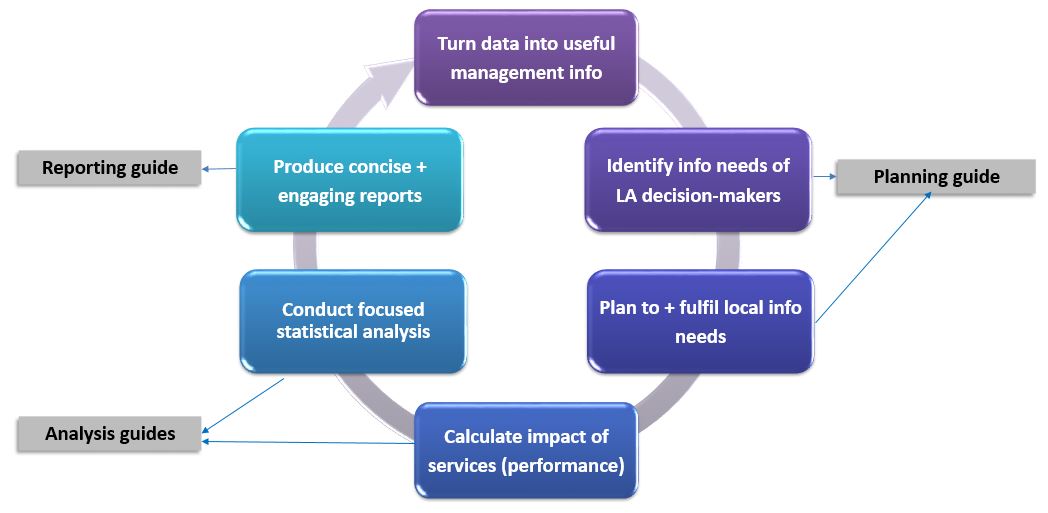INTRODUCING THE MAX TOOLKIT: WHAT IT IS AND HOW TO USE IT
Many of you working in local authority (LA) adult social care roles may have heard of the MAX toolkit but remain unsure of what it is and whether it could be useful to you (our previous blog summarises the potential benefits). Some of you may have even registered to access the toolkit but now, in addition to these uncertainties, feel confused about which element to access first.
The purpose of this blog therefore is to address this uncertainty by briefly describing what the MAX toolkit is, why we developed it and how it may help you. The blog also provides links to a series of short recorded presentations.
DEVELOPMENT AND PURPOSE OF THE MAX TOOLKIT

The MAX toolkit is a free online resource and is designed to support LA staff associated with the Adult Social Care Survey (ASCS) or Carers Survey (PSS SACE) to use more data from the surveys to guide local decision-making and service improvements. It was developed by us to address the barriers to collecting and using ASCS and PSS SACE data reported by 139 staff from 95 LAs across England during our earlier project activities (see the MAX working paper for further information) and amalgamates engagement, analysis and reporting strategies recommended in the wider literature, along with existing LA practice.
As well as helping users (usually LA analysts and their managers) to overcome common barriers during the survey process, the aim of the MAX toolkit is to provide the guidance and tools needed to support LA staff to:
- Transform the ASCS and PSS SACE into a large piece of local research; and/or
- Translate the data collected by the surveys into meaningful management information.
This, in turn, can help users to make the most of the considerable time and resources allocated to the surveys and, by enabling decision-makers to use the data to inform local service delivery and improvements, to fulfil their obligations under the Care Act.
USING THE MAX TOOLKIT
The MAX toolkit contains guides, Excel-based analysis tools and training resources structured around the three key stages of the survey process (planning, analysis and interpretation, and reporting), and, since the launch in June 2016, has been further expanded in response to ongoing feedback and requests from LA users. This means that the MAX toolkit contains a lot of individual elements!

Finding the most relevant and potentially useful elements can be challenging so, being ever mindful of the increasing pressure on LA staff to deliver more with less time and resources, we streamlined the MAX toolkit during the summer of 2017 to focus on three key activities: planning the key stages of the survey process; conducting focused exploratory and further analysis; and producing concise and useful reports.
These activities are summarised in the table below, along with links to the relevant MAX guides and introductory overviews. The guides have been designed to supplement the guidance provided by NHS Digital and can be read either in sequence or independently. Recommendations on when you should read guide are also provided in the table but, depending on the stage of the survey process and the time and resources allocated to you for survey related activities, you may find some guides more relevant than others. The introductory overviews and other project blogs should help you to decide.
| Activity | Overview of relevant guide(s) | Link to overview |
|---|---|---|
| Planning the key stages of the survey process | The MAX PLANNING GUIDE shows you how you can identify and fulfil the information needs of decision-makers within your organisation using ASCS and PSS SACE data. This guide provides an overview of the entire survey process and includes links to all the elements included in the MAX toolkit, so should be read first, and alongside the guidance provided by NHS Digital. | Click here |
| Conducting focused exploratory & further analysis | The EXPLORATORY DATA ANALYSIS (EDA) GUIDES outline how you can establish general trends in reported outcomes, measure the impact of services on quality of life and identify areas of potential interest or concern using your ASCS or PSS SACE datasets. These guides should be read once you have validated and submitted your data return to NHS Digital. The FURTHER ANALYSIS GUIDES show you how to conduct statistical and thematic analysis, and produce finings that can help you to better understand the views and experiences of adult service users and carers, identify priorities for local improvements and establish most appropriate strategies for amending and targeting services. These guides can be read during the planning stage (for ideas on what local questions or sample frame modifications might be useful) and/or once you have conducted your EDA and, where possible, reviewed your findings with the relevant decision-makers. | Click here |
The next blog summarises the rigorous methodology underlying the development of the ASCS and PSS SACE, and outlines why both can provide an invaluable opportunity for local research. This blog can be accessed here.
Disclaimers
This blog is based on independent research commissioned and funded by the NIHR Policy Research Programme (Maximising the value of survey data in adult social care (MAX) project and MAX toolkit implementation and impact study). The views expressed in the publication are those of the author(s) and not necessarily those of the NHS, the NIHR, the Department of Health and Social Care or its arm’s length bodies or other government departments.
